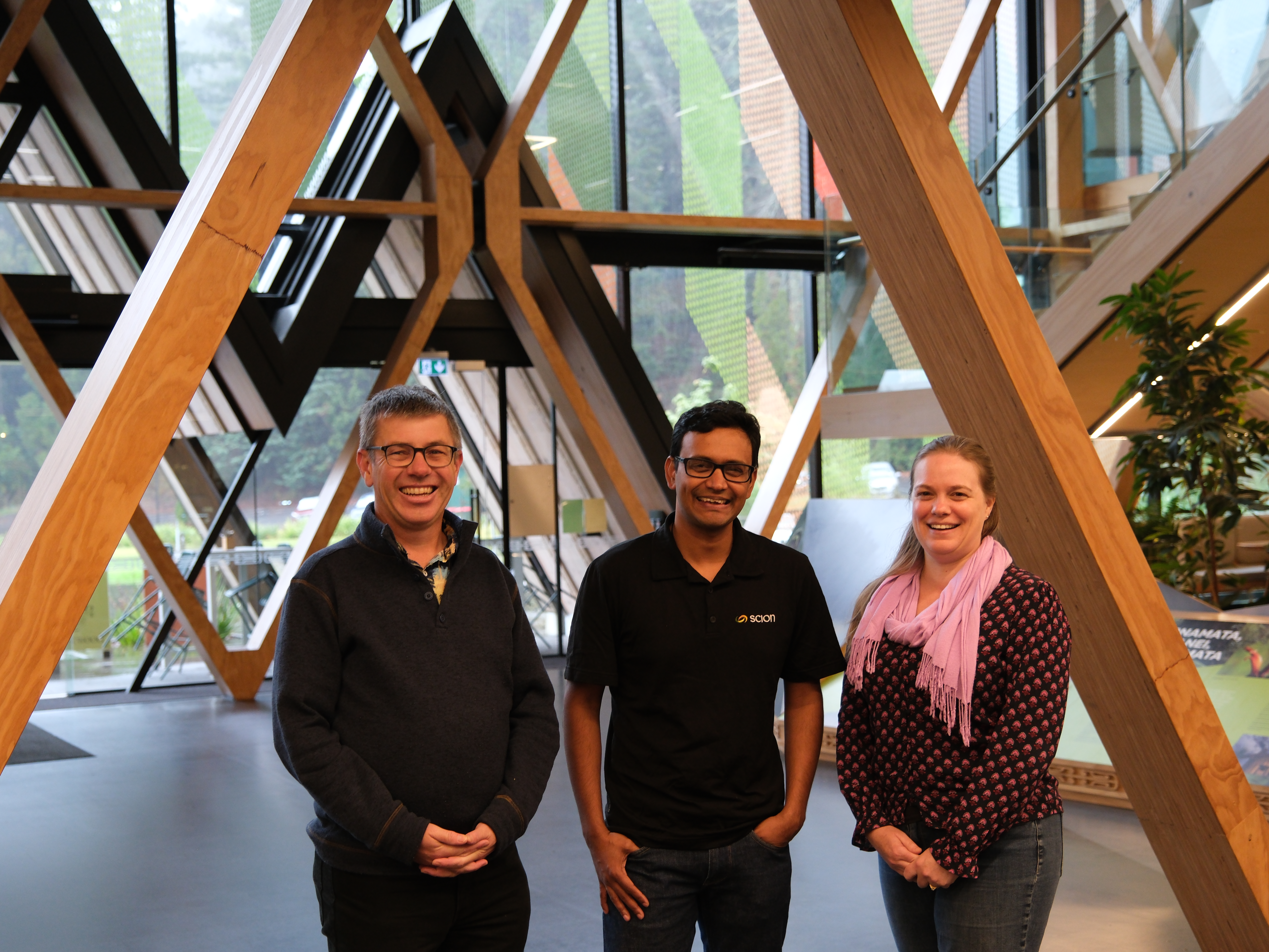Carbon capture: no single tree species is best
16 May 2024
Scion scientists Serajis Salekin, Yvette Dickinson, Dean Meason, and Mark Bloomberg from the University of Canterbury recently published research about the carbon sequestration potential of plantation tree species in New Zealand in the Carbon Balance and Management journal.
This research provides a novel framework to rank and compare the carbon sequestration rates for different exotic and indigenous tree species, their different growth rates and life cycles for carbon forests. The ability to determine what species grows best at a particular site allows for more effective decision-making.
No one species was shown to always be the best – this is in contrast to other studies on this topic. This finding reflects the complex dynamics between site, species, and management. The research utilised a widely accepted and internationally used hybrid model (Physiological Processes Predicting Growth; 3PG), parameterised for species that were unavailable with other models.

In the paper, entitled Carbon Sequestration Potential of Plantation Forests in New Zealand, five species (Pinus radiata, Pseudotsuga menziesii, Eucalyptus fastigata, Sequoia sempervirens and Podocarpus totara), at three case study locations around New Zealand and two silvicultural regimes were compared. Carbon sequestration potential varied among the species, sites and silvicultural regimes.
The outcomes varied by site, but generally if considering long-term carbon sequestration, Podocarpus totara (tōtara) and Sequoia sempervirens (coast redwood) should be preferred. Conversely, short-term rapid carbon sequestration is more likely to be achieved with Pinus radiata (Monterey pine), Pseudotsuga menziesii (Douglas-fir) and Eucalyptus fastigata (brown barrel).
Lead author and ecophysiological forest modeller, Serajis Salekin says “the research further emphasised the importance of site-species matching with appropriate management to maximise gain, in this case carbon rather than arbitrarily choosing species."
The process-based model allowed for an equal comparison of different forest types: different species, different locations and different management. The ‘gold standard’ of available tools to project carbon accumulation are built on statistical modelling. This type of approach applies generalisations across the country and doesn’t include variation in spatial scales.
Scion Portfolio Leader Designing Forests – Mahi Tahi Whaihua, Yvette Dickinson “some species are very sensitive to location. Redwoods planted at the bottom of a ridge grow differently to those planted nearby, at the top of the same ridge. Process-based models may be more sensitive to these variations because they aim to describe important physiological and ecological processes, such as the photosynthesis, respiration and competition amongst trees.
“A process-based model may provide an opportunity to investigate the likely impact of climate change on carbon sequestration, with climate change likely to be already impacting the growth and carbon sequestration of forests.”
Scion is interested in using this research to explore how much carbon a forest might store under future climates. Other ongoing work is focused on understanding how much carbon is stored in forests, how the amount of carbon varies and what we can do to increase the amount stored.
